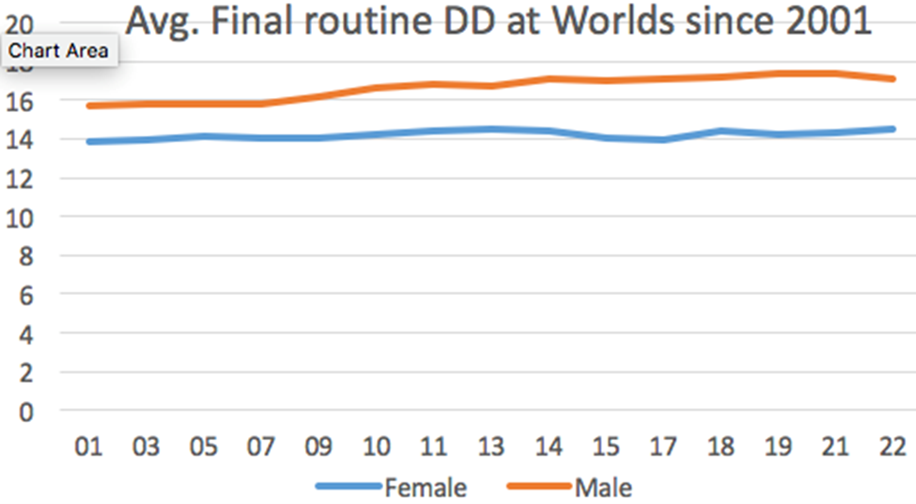More Articles...
Trampoline is the newest and lowest medal count discipline currently under the FIG. Other sports, like parkour, would love to move into the Olympic tent. Translation – Trampoline is at risk. Hence, it is imperative that we attract spectator interest.
We need to change our competition format. Perhaps man-against-man finals and ties broken by additional passes would make competitions exciting! A focus on informing and entertaining the audience is needed. Scores must be clearly displayed promptly at the venue while online information is delayed.
Dead time during competitions should be eliminated. Having eight trampolines in the competition gym and no warm-up hall would ensure there is always something to watch. Judges would move back and forth, and competitions could run faster.
Since Time of Flight was added in 2001, trampoline routines have practically stagnated. Difficulty (DD) is not a big enough part of the total score (under 29% for men, 26% for women, but 71% for DMT men)! In addition, the difficulty system encourages primarily certain skills (usually in the pike position), so routines look very similar to each other.
Is it exciting to allow the same routine every round?
So clearly, a revised DD system is needed. Ideally, it should be mathematical, easy to use, gender neutral, and accurate.
I have been working on an improved DD system off and on since 2014. It is quite the puzzle. The first step was to get a group of experts to rank current and future skills. Their average opinion was then used to test the accuracy of new proposals. Over time, thanks to suggestions from many people, a simple new DD system could be…
Somersaults
- 1 per quarter somersault
- 2 per completed somersault
- 1 for 3 or more somersaults
Twists
- 1 per half twist
- 1 per completed twist (plus more credit given to back rotating skills with twists)
- 1 for extreme twisting starting at singles with 2.5 twists or more and multiple somersaults with 2 twists or more during one of the somersaults
- 1 for twisting on more than one somersault during skills with 3 or more somersaults
Position
- Pike – 0.1 for doubles and 0.2 for three somersaults or more
- Straight – 0.2 for doubles and 0.3 for three somersaults or more
Exception: Straight double somersaults with two or more twists get 0.1 for position (for example, 813< and 822/ are equal).
A new DD system
This system gives higher DD for skills from beginner to expert and better ranks the skills. It is the same for men and women. For example, it credits triple full as harder than double back tuck and rudy out tuck as harder than half-out pike.
The Technical Committee is proposing a complex modification to the DD system with gender differences and bonuses. It would increase the difficulty of primarily harder routines. For those, it would allow for a smaller increase. It would not deal with the current undervaluing of twists and overvaluing of position, which affects all levels of athletes.
Meanwhile, since the 1966 World Trampoline Championships, participation, bounce height, and difficulty have skyrocketed, while beds have gone from 25mm to 4mm webbing. During the same period, there has been no change to the size of the trampoline frames! At the last World Championships, more than 41% of the men failed their preliminary routines. Maybe it is time for wider frames.
Your comments are appreciated.


